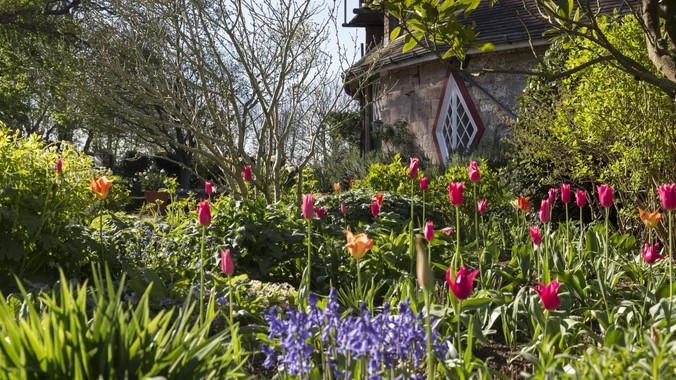
Emma’s placement with The National Trust took her to A la Ronde, a quirky 18th Century 16 sided house
Jane and Mary Parminter, cousins of independent wealth, purchased land in Devon between 1795 and 1798 and built a sixteen-sided cottage ornee, A la Ronde. Construction of the house was followed by a chapel, almshouses, a school, and a manse. The purpose of the expansion of the estate was to provide housing, education, and work for poor women and local children. Mary’s will aimed to ensure that A la Ronde could only be inherited by unmarried female relations.
My placement research project re-evaluated notions of the all-female community that the Parminters established as a mark of eccentric obscurity. This project aimed to situate what we know about the estate from limited archival sources within the broader contexts of both female and cottage communities in the eighteenth century to help us think about the Parminters’ vision for a community and how they envisaged it would not only provide a home, or retreat, for themselves but could be of service to the wider community for generations of women to come. As such, I took a literary-historical approach and examined examples of, and discourses surrounding, both cottage and all-female communities in the long eighteenth century.
Though the placement was designed to be undertaken remotely, a highlight was visiting the property in Devon and learning more about the Parminters and the other inhabitants of the house through the history of the objects at the sixteen-sided cottage. This included a recent conservation project to preserve Jane and Mary’s 200-year-old trunks and the Shell Gallery and Grotto stairs. It was also particularly interesting to survey the architectural modernisations made by the only male to occupy A la Ronde, Oswald Reichel. Reichel lived in the house from 1879 to 1923 and installed central heating and replaced the eighteenth-century thatched roof with tile. In addition to Reichel and the seven other women who inherited the house after Mary Parminter, it was also interesting to examine the census records to learn more about the servants employed at the house between 1841 and 1901.
The research report concluded that though there are striking similarities between imaginings and lived realities of female cottage communities, such as that in Sarah Scott’s 1762 novel Millennium Hall and the Parminters’ Estate, this research found that visions, imaginings, and realities of both cottage and all-female communities were present in the eighteenth-century cultural, political, and literary discourse. Therefore, the research proposed that the Parminters’ founding of such a community was not as obscure as it may now seem. Perhaps the only unusual aspect of the Parminters’ creation is that it was successful. Many other visions for such utopic spaces, such as the Hitcham House project, of which Sarah Scott was a participant in 1768, failed. The Parminters, however, not only provided a home, or retreat, for themselves and their female descendants, but secured an estate which would be of service to the wider community for generations of women to come.


0 Comments